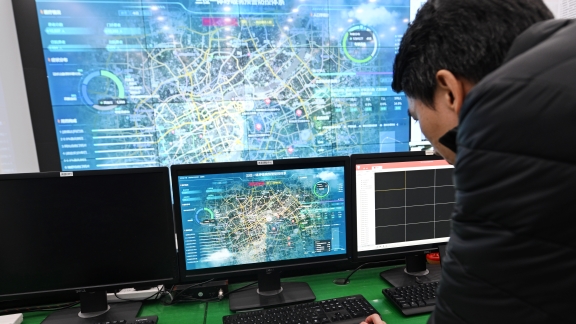

Ti Gong
A real-time big data-based acute respiratory disease alerting system has been trialed in the Pudong New Area.
A real-time big data-based acute respiratory disease alerting system has been trialed in the Pudong New Area, which allows an earlier arrangement of medical resource preparation, high-risk patient management, and a forecast of the disease’s future prevalence.
Based on data and analysis from the system, hospitals are able to make proper preparation on drugs and beds as well as inform regional health authorities of a possible patient peak.
Forecasting the trend of infectious disease depends on high-quality collection of data from different departments of a hospital and different hospitals, as patients with different symptoms may visit different departments and hospitals. Usually, their data are all isolated, presenting difficulty in chasing a virus’s development and forecasting its prevalence.
“This system combines all data into a pool and carries out accurate data searching, grabbing and analysis based on key words and generates it into visible content,” said Xu Zhaohui, vice president of Shanghai East Hospital, the system developer.
This new system is shows its effect in this flu season, hospital officials said.
“Previously, it is the hospital reporting to the authority regularly on the data of infectious disease cases. The data are all lagging indicators. This new system can collect all information and do real-time analysis and evaluation, ” said Dr Li Qiang, director of the hospital’s respiratory disease department.
“So far, it has data from our hospital and Beicai Neighborhood Health Center, a member of our health cluster, as a trial,” Li said. “The figure on flu A cases was some 4,500 in October, over 5,100 in November and over 9,000 in December. The quantity in the first week in January was over 4,300, so we forecast flu cases will surpass 20,000 this month,” he said.

Ti Gong
The system indicates there have been 4,357 flu A cases so far this month, while other respiratory infectious diseases are of a much lower prevalence.
“The system gave an alert in late December, as flu cases rose sharply. We then started to do relevant preparation like arranging more doctors at respiratory disease outpatients, asking pharmacies to prepare more medicines and reporting to the district health authority on the possible rise of flu prevalence. We also contacted with neighborhood health centers in our clusters to pay more attention to the elderly and people with chronic diseases and encourage them to receive flu shots in time,” Li said. “Though we are receiving more patients now, we are in a proper process.”
In addition to acute infectious disease, the system also can be used on chronic disease screening, monitoring and management. It is a good example of digital medicine, officials said.







